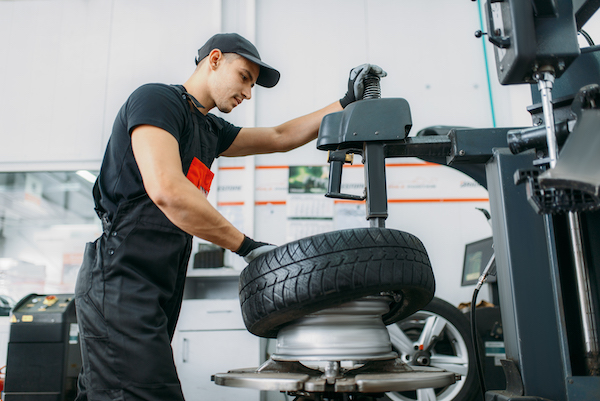Discover Top-Quality Tires Morris IL: Choose the Best for Your Vehicle
Discover Top-Quality Tires Morris IL: Choose the Best for Your Vehicle
Blog Article
Tire Solution: Recognizing Tire Stress Tracking Systems
Comprehending Tire Pressure Surveillance Systems (TPMS) is a vital aspect of keeping optimal vehicle efficiency and security on the road. With developments in auto innovation, TPMS has actually come to be a conventional feature in modern lorries, giving real-time details on tire stress degrees.

Relevance of TPMS
The value of Tire Pressure Monitoring Equipments (TPMS) depends on their capacity to boost vehicle security and performance with real-time tracking of tire stress levels. Keeping the correct tire stress is critical for ensuring optimal handling, stopping, and total security of a vehicle. TPMS provides drivers with instant responses on any type of overinflated or underinflated tires, enabling timely changes to be made.
Parts of TPMS
Comprising different crucial elements, a Tire Pressure Monitoring System (TPMS) works as an advanced security attribute in modern-day automobiles. The primary elements of a TPMS include sensing units, a control module, and a caution indication. Sensors are normally located in the tire valve stem or connected to the wheel assembly, where they gauge tire stress and transmit information to the control module. If it spots significantly reduced stress in any of the tires, the control module procedures this information and causes a caution. The caution indication, often a symbol on the dashboard, signals the motorist to check the damaged tire or tires. Some advanced TPMS designs also display the actual tire pressure readings for every tire, giving motorists with real-time details to make certain optimum tire performance and security. By monitoring tire pressure continually, TPMS helps avoid crashes, lowers tire wear, and enhances gas performance, making it a vital component for car safety and performance.
Types of TPMS

On the various other hand, indirect TPMS relies upon the vehicle's wheel speed sensing units to monitor tire pressure. This system identifies underinflation by contrasting the rotational rates of the wheels. Indirect TPMS is much less costly than direct TPMS, as it makes use of existing sensing units within the car.
While direct TPMS supplies a lot more precise readings, indirect TPMS is easier in design and typically calls for less maintenance. Both systems have their benefits and restrictions, and the choice in between them often depends on factors such as price, lorry make, and individual preference. Comprehending the differences in between these 2 kinds of TPMS can aid car proprietors make educated decisions relating to tire maintenance and safety.
TPMS Maintenance Tips
Reliable maintenance of TPMS is crucial for ensuring ideal performance and security of your vehicle. Regularly inspecting the TPMS sensing units for any damages or corrosion is critical. Ensure that the sensing units are clean and totally free from particles that might interfere with their performance. In addition, it is suggested to inspect the sensing unit batteries regularly and change them as required to assure precise readings. Conduct regular checks on the tire pressure levels and contrast them with the TPMS readings to guarantee they correspond. If there are any discrepancies, rectify the system adhering to the maker's standards. Throughout tire rotation or substitute, make certain that the TPMS elements are taken care of carefully to avoid any prospective damage. If the TPMS alerting light illuminates on the control panel, address the problem without delay by my sources inspecting the tire stress and the total system for any type of faults. By sticking to these maintenance pointers, you can extend the lifespan of your TPMS and enhance the safety of your driving experience.
Benefits of Appropriate Tire Pressure
Maintaining proper tire pressure, as stressed in TPMS Maintenance Tips, is vital for gaining the numerous advantages connected with optimal tire stress levels. In addition, appropriate tire stress makes certain also tire wear, expanding the life expectancy of the tires and advertising safer driving conditions. In final thought, the advantages of appropriate tire pressure go past just tire longevity; they incorporate boosted gas effectiveness, improved security, better automobile performance, and total driving comfort.
Verdict
To conclude, recognizing tire pressure monitoring systems (TPMS) is crucial for maintaining optimum tire stress and guaranteeing lorry safety. By acknowledging the value of TPMS, recognizing with its elements, knowing the various kinds available, sticking to proper upkeep tips, and understanding the benefits of keeping proper tire pressure, vehicle drivers Visit This Link can improve their driving experience and extend the life-span of their tires. Proper tire pressure is key to secure and reliable car procedure.

Report this page